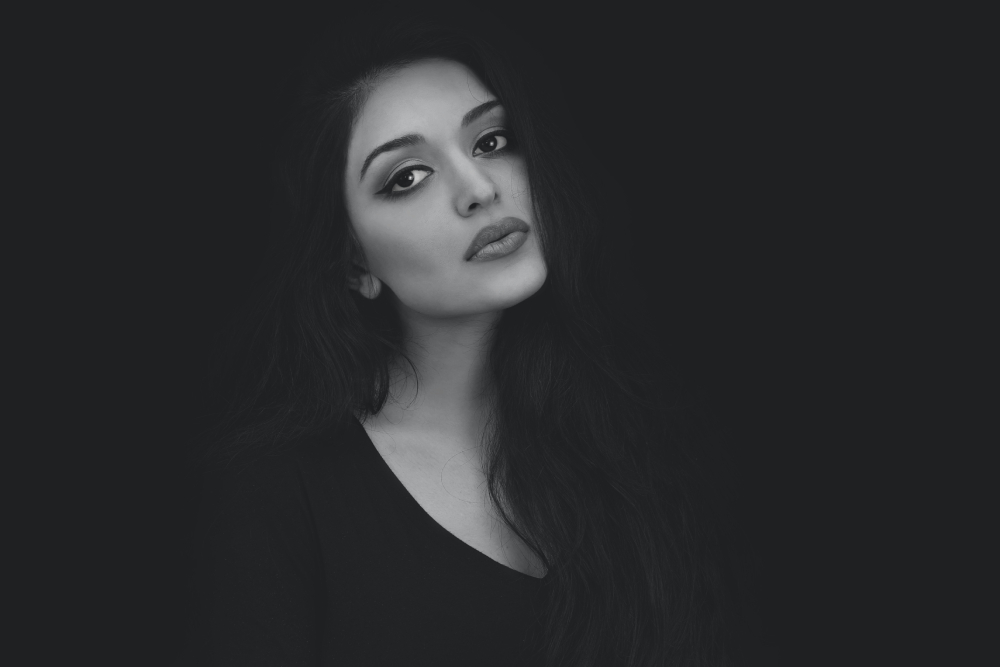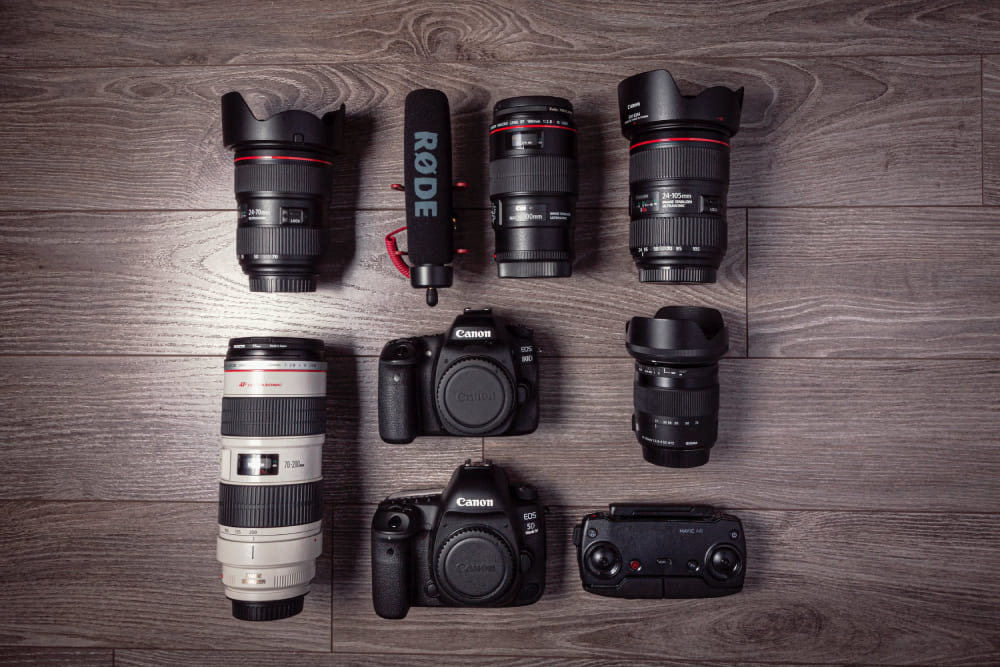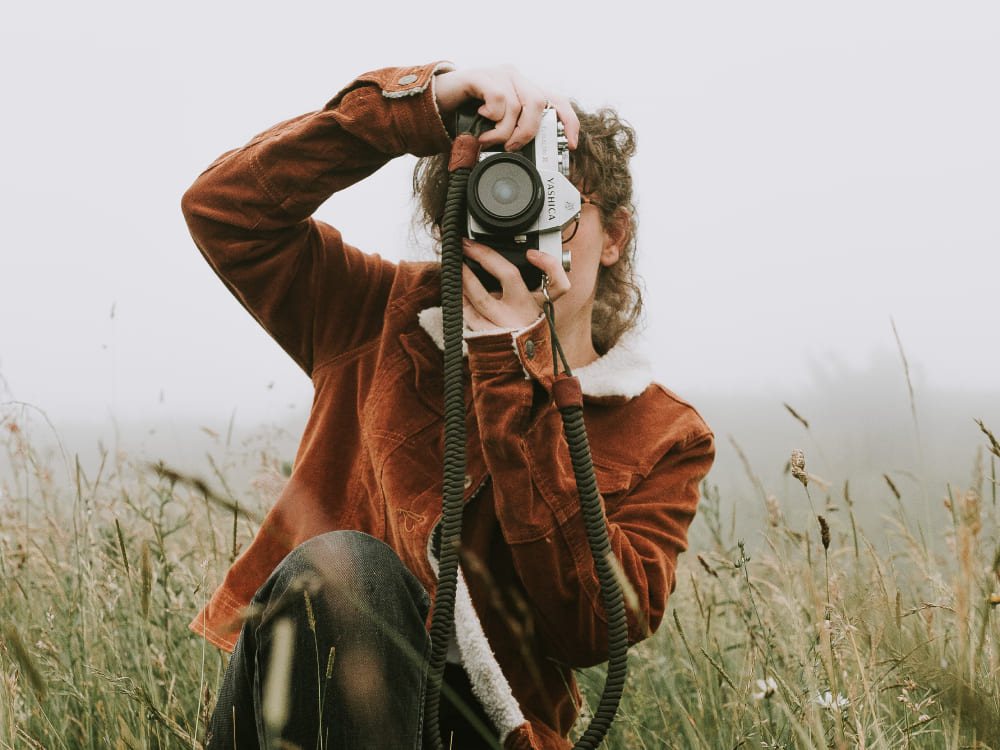Tips and Techniques for Mastering Portrait Photography
Portraits have been around since the dawn of time, from the earliest cave paintings to the modern day. There's something about capturing the essence of a person on film that is both fascinating and challenging.
Whether you're a professional photographer or just starting out, taking good portrait photography requires a combination of skill, technique, and creativity. (Want to know what portrait photography is, check out here)
In this article, we'll explore some tips and techniques for capturing stunning portraits that showcase the personality, emotion, and essence of your subject.
From choosing the right equipment to working with your subject and post-editing, we'll cover everything you need to know to take your portrait photography to the next level.
So, grab your camera, and let's get started!

In this article, you will learn:
- The Key Elements of a Good Portrait Photograph
- The Essential Equipment and Gear for Portrait Photography
- Tips for Capturing Great Portraits
- Editing and Post-processing Tips
The Key Elements of a Good Portrait Photograph
A good portrait photograph should capture the personality, emotion, and essence of the subject in a way that is visually engaging and emotionally impactful to the viewer. Here are some elements that contribute to good portrait photography:
1. Composition
Good portrait photography requires a well-thought-out composition.
This means placing the subject, background, and other elements in a balanced and pleasing way that draws the viewer's attention to the subject. Various techniques, such as the rule of thirds, can be used to create a dynamic composition.
The background should complement, not distract from, the subject. Props and other elements can be used but should not take away from the subject.
A well-composed portrait captures the subject's essence and creates an engaging and visually-appealing image for the viewer.
2. Lighting
The way lighting is used can greatly affect a portrait's mood, tone, and overall feel.
When taking a portrait, the direction, intensity, and color of the light source should be considered.
Lighting direction can create shadows and highlight the subject's features, while intensity can create a dramatic or soft effect.
Color can also affect the mood, with warm colors creating a cozy, intimate feeling and cooler colors creating a somber mood.
Different types of lighting, such as natural or artificial, can also be used to create different effects.
A skilled photographer who carefully considers lighting can create a portrait that captures the subject's personality and emotion in a visually compelling way.
3. Focus and Depth of Field
Focus and depth of field are important in portrait photography. They can be used to highlight parts of the subject's face or create a sense of depth in the photo. Focus means making the subject sharp and directing the viewer's attention.
For example, a portrait can have sharp eyes to create a connection with the subject. Depth of field refers to how much of the photo is in focus.
A shallow depth of field can blur the background to make the subject stand out, while a deep depth of field shows more detail. Creative use of focus and depth of field can make the portrait more interesting and impactful.

4. Expression
The subject's facial expression and body language are important in portrait photography. They can show the subject's personality, emotions, and story. A good portrait should capture the subject's essence, whether they are happy, sad, or thoughtful.
Facial expressions, like a smile or serious look, and body language, like posture and gestures, can reveal a lot about the subject.
A skilled photographer can capture the subject's unique expression to create a more engaging and meaningful portrait that leaves a lasting impression on the viewer.
5. Post-processing
Post-processing is a technique used in portrait photography to improve the picture's quality. It's not necessary, but it can be helpful.
Color correction can adjust the colors to make them look accurate. Retouching can remove small blemishes to make the subject look polished. Effects like filters can be added to create a unique look.
However, using too much post-processing can make the picture look fake. A skilled photographer knows how much to use to enhance the portrait's overall impact without losing its natural beauty. With the right post-processing, a portrait can become a beautiful work of art.

The Essential Equipment and Gear for Portrait Photography
Capturing stunning portraits requires more than just skill and creativity - having the right equipment and gear is crucial to achieving the best possible results.
Whether you're a professional photographer or just starting out, having the right tools in your arsenal can make all the difference in creating a portrait that truly captures the essence of your subject.
In this section, we'll explore the essential equipment and gear that every portrait photographer should have in their toolkit, from the camera and lenses to lighting and accessories.
With these tools at your disposal, you'll be well-equipped to create portraits that are both visually stunning and emotionally impactful.
1. Recommended Cameras for Portrait Photography
There is no definitive "best" camera for portrait photography, as the choice depends on your personal preferences, budget, and experience level. However, there are a few recommendations for cameras that are known to perform well for portrait photography. Check it out:
- Canon EOS R5: A high-resolution, full-frame mirrorless camera with a 45MP sensor and excellent autofocus capabilities. It is well-suited for portrait photography with its accurate eye and face detection.
- Nikon Z7 II: This full-frame mirrorless camera offers a 45.7MP sensor and a sophisticated autofocus system. Its color rendition and image quality make it a great choice for portrait photography.
- Sony A7R IV: With a 61MP full-frame sensor, this mirrorless camera is known for its outstanding image quality and detail rendition. Its eye autofocus performance is impressive, making it a popular choice for portrait photographers.
- Fujifilm GFX 100:This medium format mirrorless camera offers a massive 102MP sensor, producing stunning image quality and detail. While it is more expensive and larger than many alternatives, it can produce exceptional results for portrait photography.
- Canon EOS 5D Mark IV: A tried-and-true DSLR option, the 5D Mark IV has a 30.4MP full-frame sensor and is known for its excellent color reproduction and reliable autofocus system.

2. What's the Best Lens for Portrait Photography
The best lens for portrait photography largely depends on personal preference and shooting style, but there are a few characteristics that are generally considered important for portrait lenses.
One of the most essential features is a wide aperture, which allows for a shallow depth of field and a blurred background, also known as bokeh.
This helps to isolate the subject and create a more visually pleasing image. For portrait photography, prime lenses with large apertures (e.g., f/1.4 or f/1.8) are often recommended, as they allow for a shallow depth of field and good subject isolation.
Another important consideration is focal length. Lenses with a focal length between 50mm and 85mm are often recommended for portraits, as they produce a natural-looking perspective and allow for a comfortable distance between the photographer and the subject.
However, longer focal lengths, such as 135mm or 200mm, can also produce stunning portraits with even more compressed backgrounds and shallow depth of field.
Some popular lenses for portrait photography include the Canon EF 85mm f/1.8, Nikon 85mm f/1.8G, Sony FE 85mm f/1.8, and the Sigma 85mm f/1.4 Art.

3. Lighting Equipment and Necessary Accessories
To achieve the best results in portrait photography, it's important to have the right lighting equipment and accessories. These include studio strobes, continuous lighting, speedlights, light modifiers such as softboxes and umbrellas, reflectors, light stands, and backdrops.
These tools can help to shape and control the light, fill in shadows, and create a variety of backgrounds to complement the subject. Each of these accessories plays a unique role in achieving the desired effect, and a skilled photographer knows how to use them to create stunning portraits.
Tips for Capturing Great Portraits
1. Establish a Connection With Your Subject
To capture an authentic and engaging portrait, it's essential to establish a connection with your subject. Take the time to talk to them, get to know them, and make them feel comfortable and relaxed. This will help them to feel more natural in front of the camera and allow you to capture their true personality.
For example: To establish a connection with your subject, ask them questions about themselves and their interests. You can also make small talk, crack a joke, or compliment them to help them feel at ease.
2. Use Natural Light When Possible
Natural light can produce stunning portraits and is often the most flattering light source. Look for soft, diffused light, such as the light during the golden hour (the hour after sunrise or before sunset), or light filtered through a window.
For example: When using natural light, look for areas with indirect light, such as under a tree or in the shade. You can also use a reflector to bounce light onto the subject's face and reduce harsh shadows.
3. Consider the Background
The background can make or break a portrait, so it's important to choose a background that complements the subject and doesn't distract from them. Look for simple, uncluttered backgrounds that won't compete with the subject for attention.
For example: For a simple background, look for blank walls or areas with a consistent color or texture. You can also use props, such as a chair or a tree, to create a more interesting background.
4. Experiment with Different Poses and Expressions
Encourage your subject to try different poses and expressions to create a variety of looks. Try out different angles and perspectives, such as shooting from above or below, to add interest and depth to the portrait.
For example: To experiment with different poses and expressions, give your subject direction and feedback. You can also show them examples of poses or expressions you like to inspire them.
5. Pay Attention to Details
Details can make a big difference in a portrait, so pay attention to them. Check for stray hairs, clothing wrinkles, and skin blemishes. Don't be afraid to make minor adjustments, such as adjusting the subject's clothing or posing, to create a more polished and visually appealing portrait.
For example: When paying attention to details, check for distracting elements in the background, such as poles or signs. You can also use editing software to remove minor imperfections, such as a blemish or stray hair.

Editing and Post-processing Tips
Here are some editing and post-processing tips for portrait photographs:
- Crop and Straighten - Cropping and straightening the image can help to improve the composition and make the subject more prominent in the frame. Make sure to maintain the aspect ratio to avoid distortion.
- Adjust Exposure and White Balance - Adjusting the exposure and white balance can help to correct any lighting issues and create a more balanced image. Use the histogram to ensure that the image is not over or underexposed and adjust the white balance to remove any color casts.
- Retouch Skin - Retouching the skin can help to remove blemishes, wrinkles, and other imperfections. Use the healing brush or clone stamp tool to remove any unwanted elements and smooth out the skin.
- Enhance Eyes and Teeth - Enhancing the eyes and teeth can help to bring out their natural beauty. Brighten the whites of the eyes and add a catchlight to make them sparkle. Whiten teeth to make them appear brighter and more vibrant.
- Adjust Contrast and Saturation - Adjusting the contrast and saturation can help to create a more dynamic image. Increase the contrast to add depth and dimension, and adjust the saturation to make colors more vibrant.
- Add artistic Effects - Adding artistic effects can help to create a unique and visually appealing portrait. Consider adding a black and white or sepia filter, or use a selective color effect to highlight specific colors.
When it comes to photo editing, using the right tools can make all the difference. While Photoshop, Lightroom Classic, and other editing software can be powerful tools, they can also be time-consuming and repetitive. This is where TourBox comes in.

TourBox is a powerful editing controller that helps to streamline your workflow and improve your editing efficiency.
It features customizable buttons and dials that can be assigned to various editing functions. This can save you time and allow you to focus on the creative aspects of editing, rather than the technical details.
With TourBox, you can achieve professional-level editing results in a fraction of the time, making it an essential tool for portrait photographers looking to enhance their workflow.